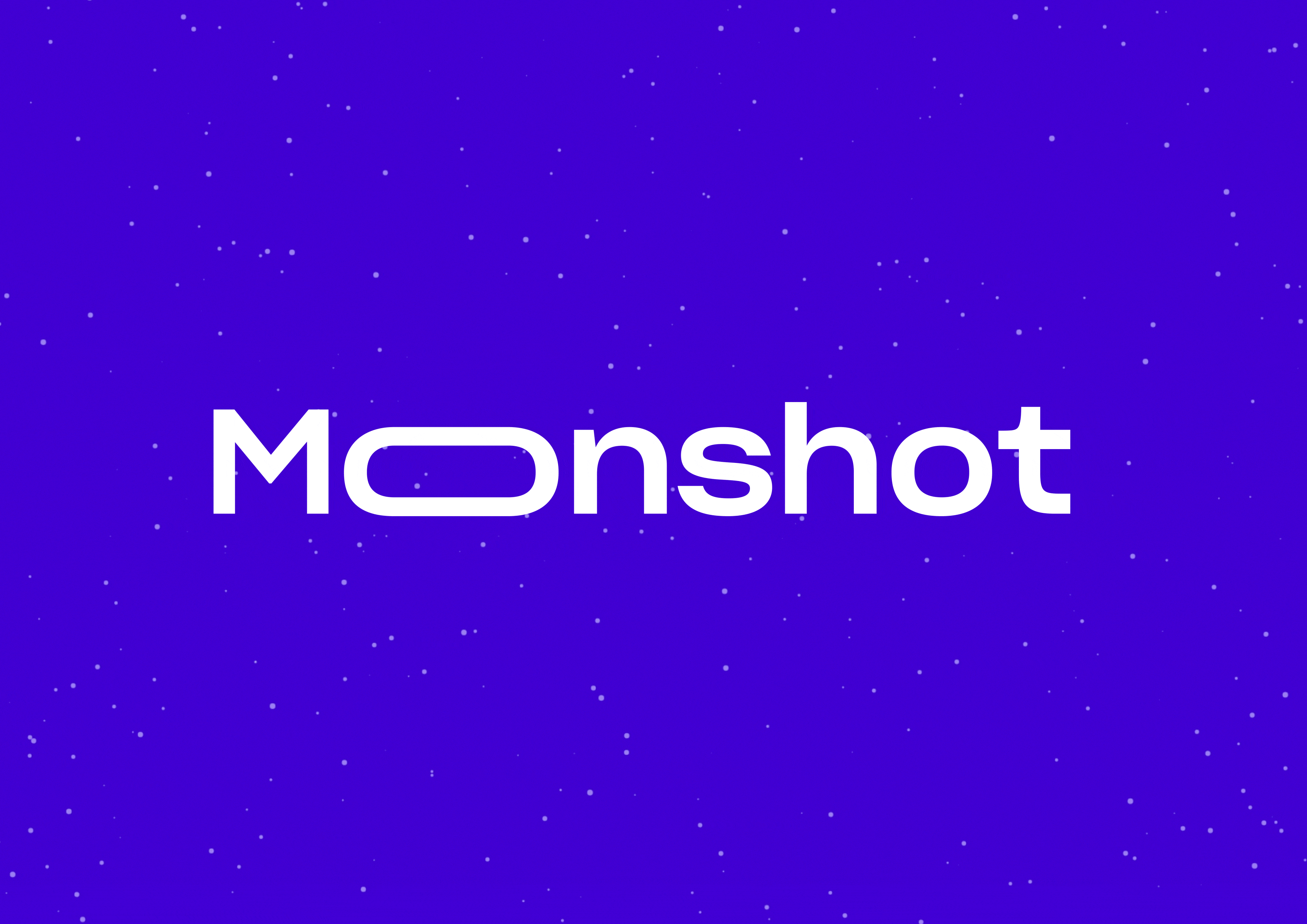- 2023–2024
- UX/UI Design,
- Digital Strategy,
- User Research,
- Illustration
- Complete digital transformation,
Automated workshop system,
Cross-platform compatibility
Digital transformation of Moonshot’s board game workshops, enabling remote team creativity sessions and automated facilitation. Led complete UX/UI redesign that expanded business capabilities from local in-person workshops to scalable remote sessions. Solved complex challenge of translating tactile board game interactions into engaging digital experience optimized for video conferencing platforms.
Till (Game Creator) – Provided core mechanics and creative vision
Developer – Built the technical implementation
Project Manager (IT) – Oversaw scope, timelines, and alignment
Myself – Led UX/UI design, research, and full digital transformation
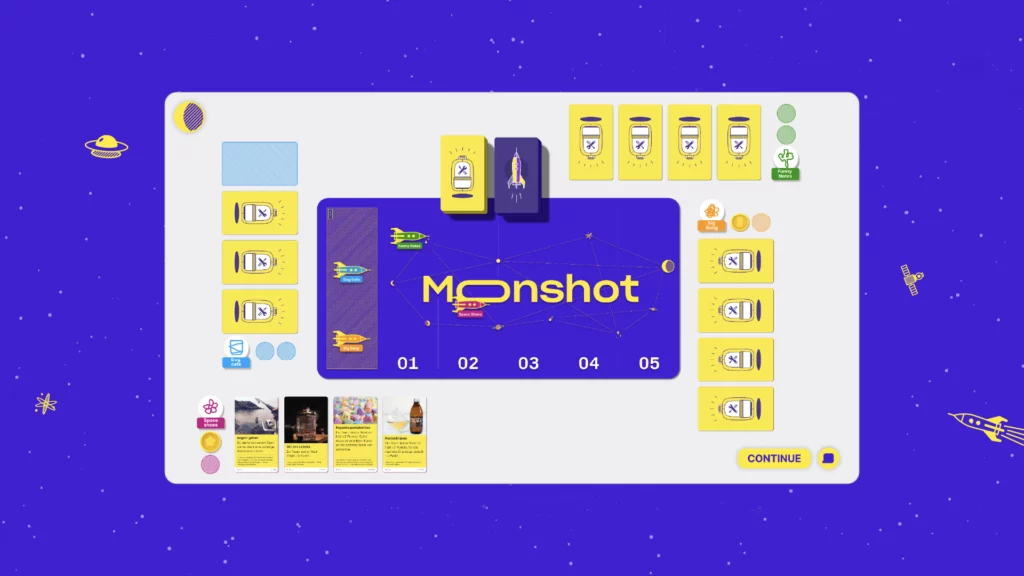
The Challenge
Moonshot’s creativity workshops were exclusively conducted in-person, limiting the business to local clients and requiring Till’s presence at every session. This created three critical business constraints:
- Geographic Limitation: Only clients within traveling distance could access workshops
- Scalability Bottleneck: The game founder could only facilitate one workshop at a time
- High Operational Costs: Travel time and expenses reduced profit margins by 40%
The physical game thrives on hands-on creativity. How could we re-create that sense of making and sharing online?
↓Physical version of the game that we based our work on
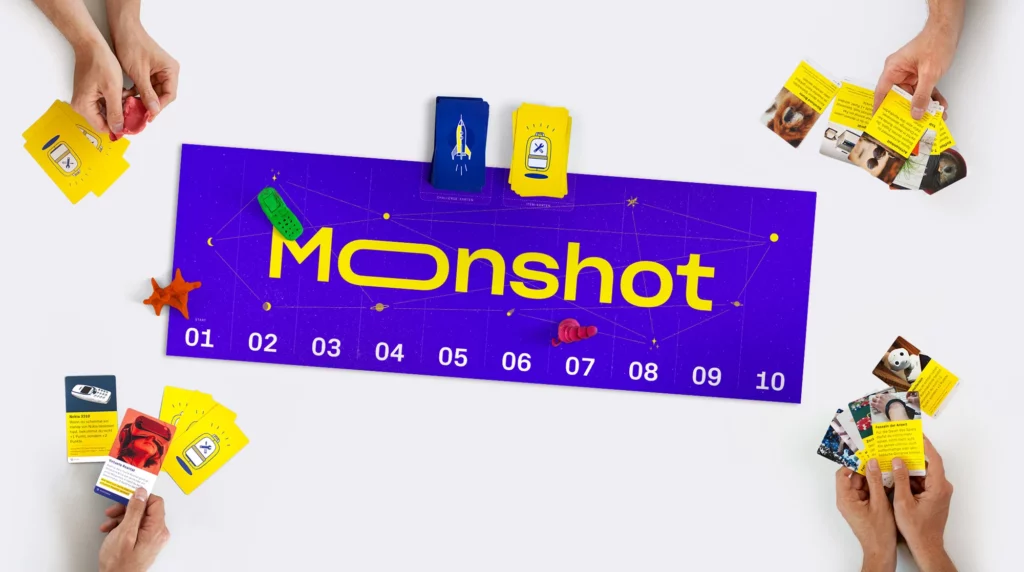
- Corporate teams wanted creativity workshops but couldn’t coordinate in-person sessions
- Remote workers were excluded from team-building activities
- Workshop scheduling was inflexible due to travel requirements
- Companies needed multiple workshop sessions but costs were prohibitive
Design Process
I began by observing multiple sessions of the physical game, mapping the player journey and identifying friction points. I also interviewed fifteen corporate clients about their needs for remote collaboration. The conclusion was clear: companies were eager for creativity workshops, but they needed them to be accessible, flexible, and cost-efficient.
To guide the design, I created personas that represented both the players and the decision-makers booking the workshops.
- Wants to feel engaged and included, even when working remotely
- Enjoys playful, hands-on ways to express creativity
- Frustrated by repetitive or uninspiring online workshops
Quote: “I want a workshop where I can actually be creative with my teammates, not just stare at another presentation.”
- Responsible for organizing engaging activities that boost creativity
- Needs scalable workshops that don’t rely on one facilitator
- Struggles with scheduling and costs of in-person events
Quote: “I need a creative workshop that works online, fits my team’s schedule, and delivers real value.”
↓First sketches
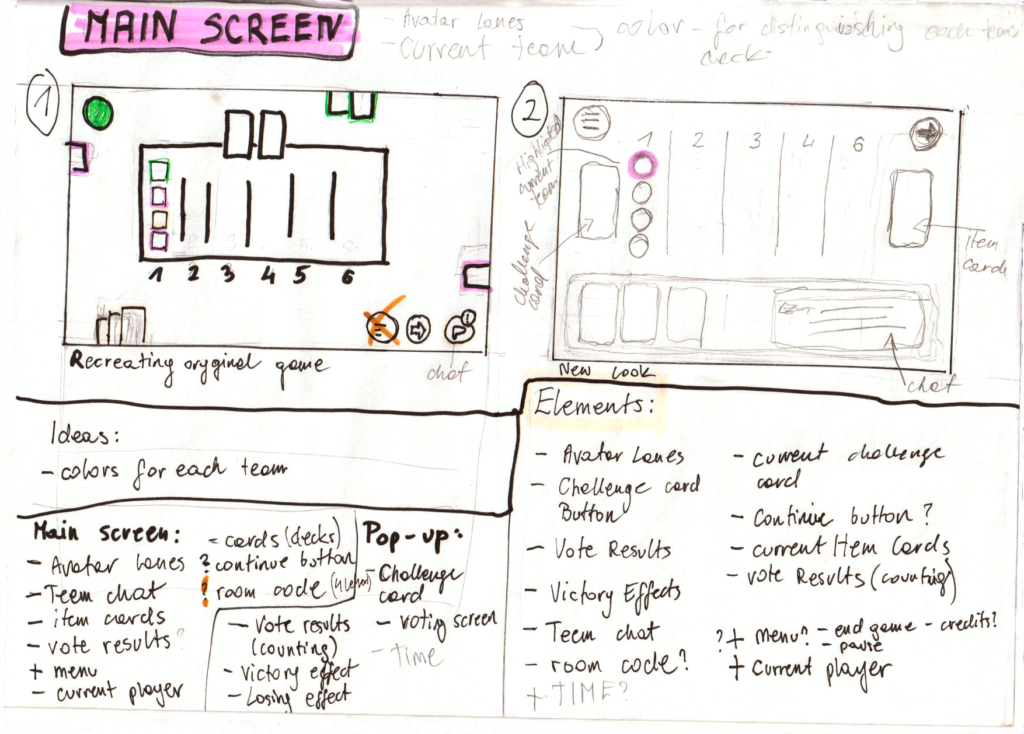
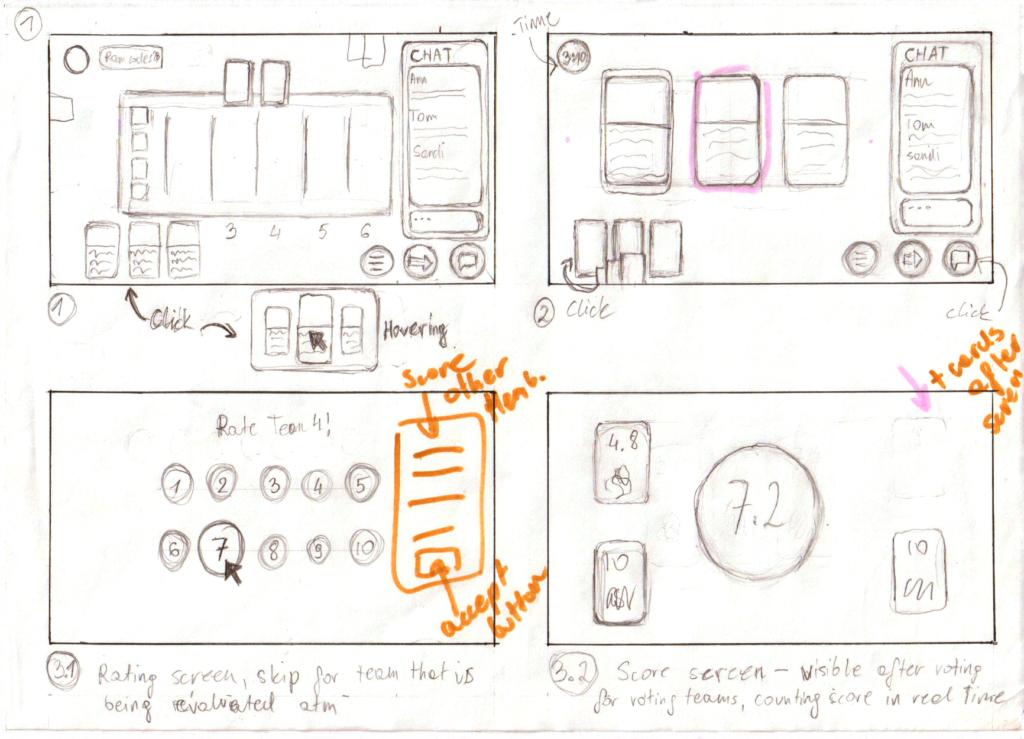
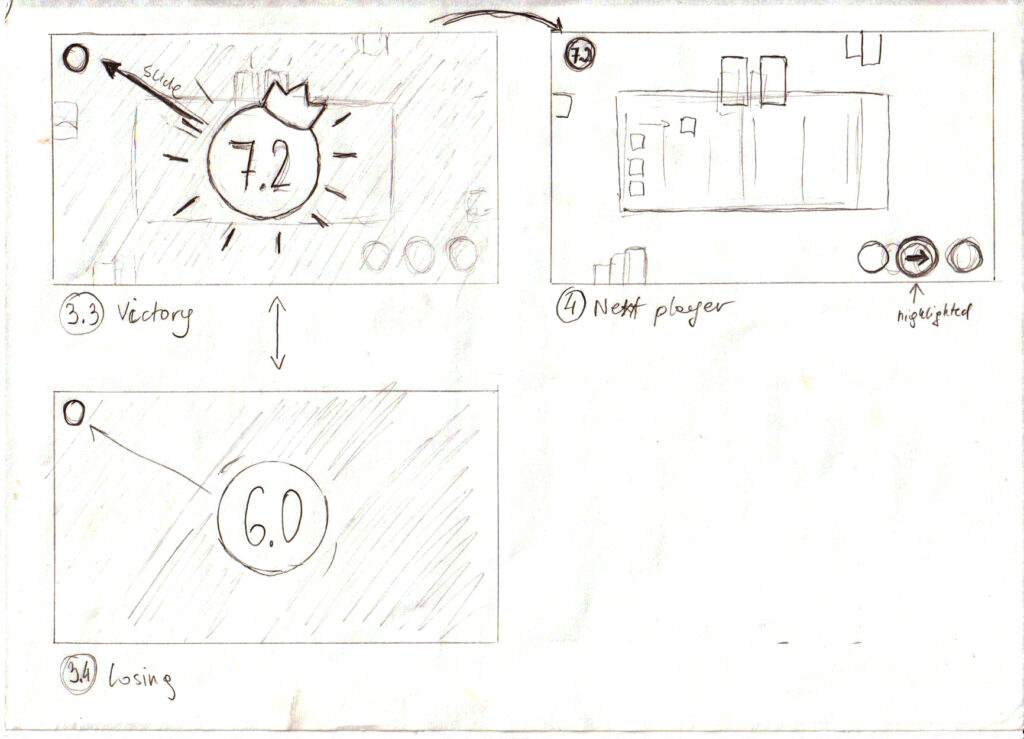
From these insights, I developed a two-phase digital flow:
- Ideation phase – teams create business ideas and tokens.
- Board game phase – challenges, collaboration, and progression toward the moon, guided by an automated facilitator.
This structure maintained the game’s creativity while making it functional in a remote setting.
↓Low fidelity prototype
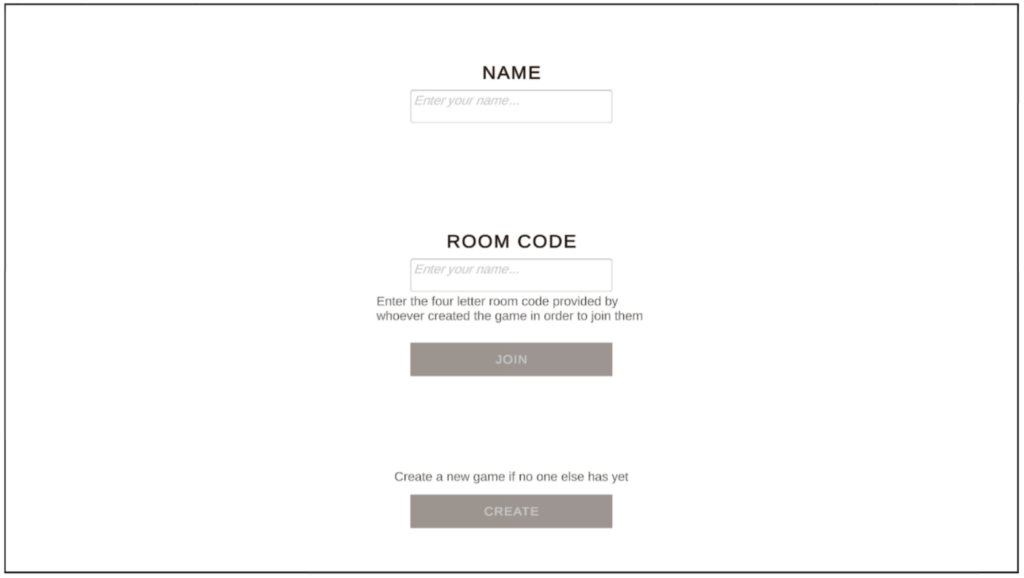
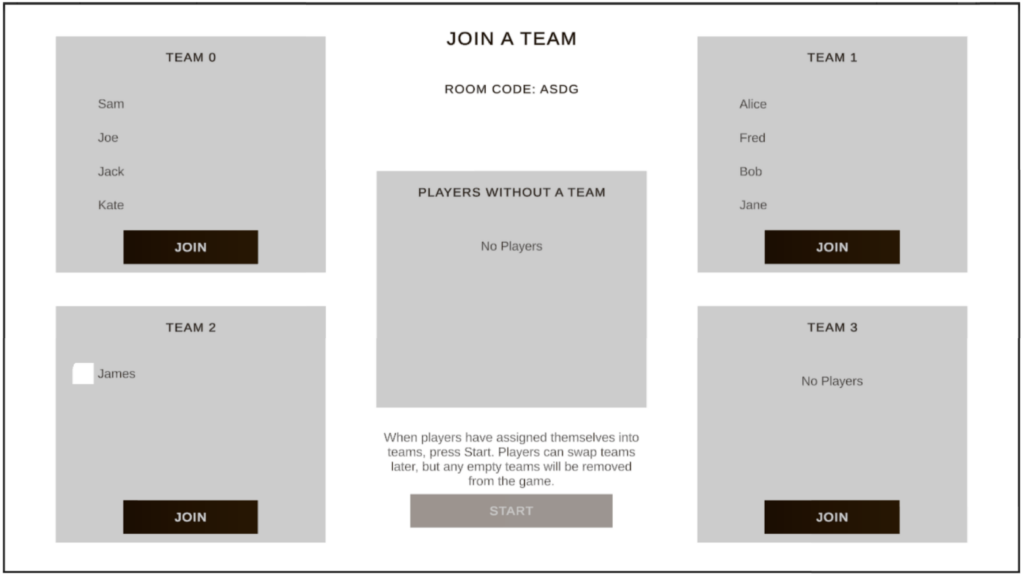

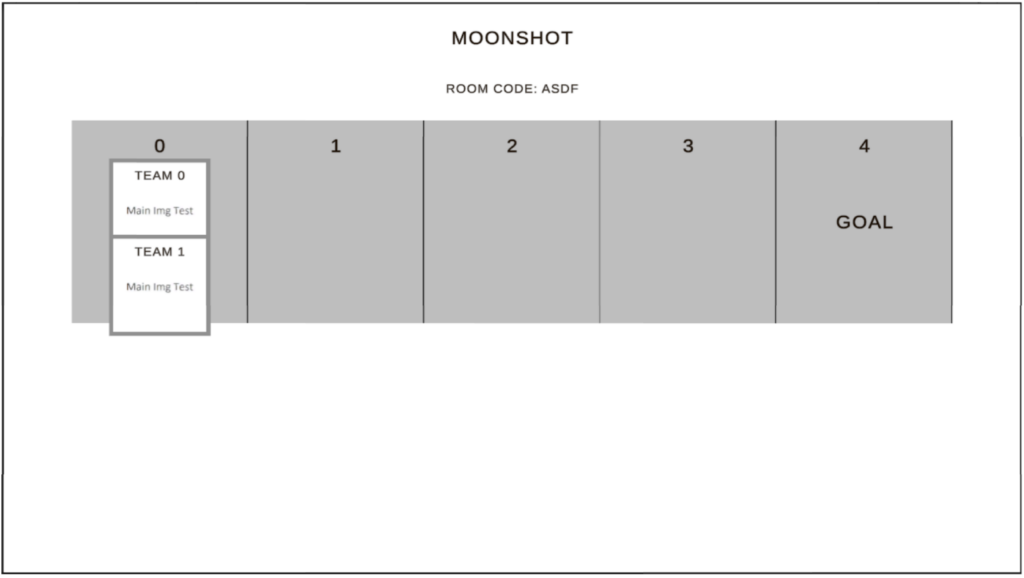

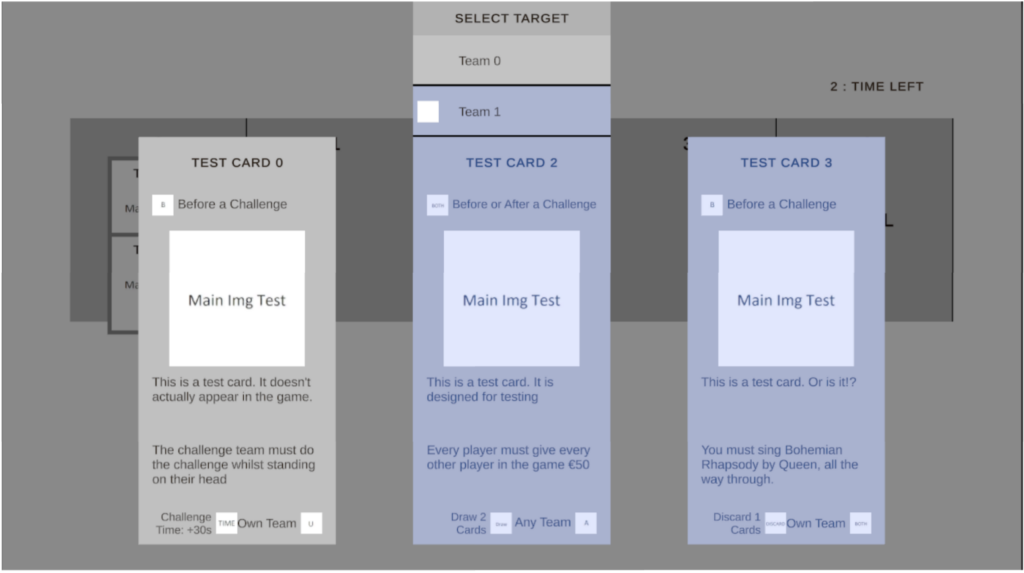
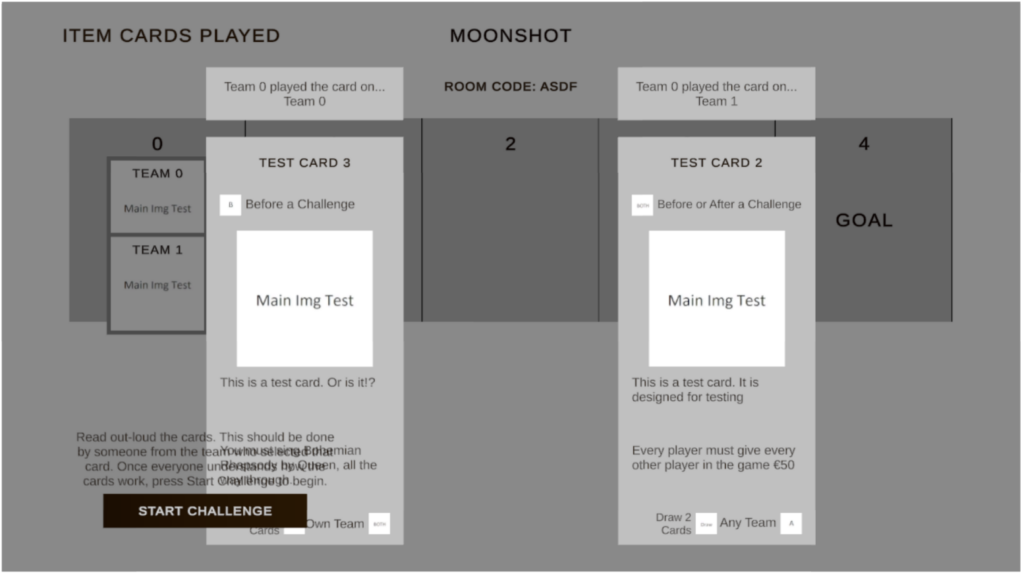
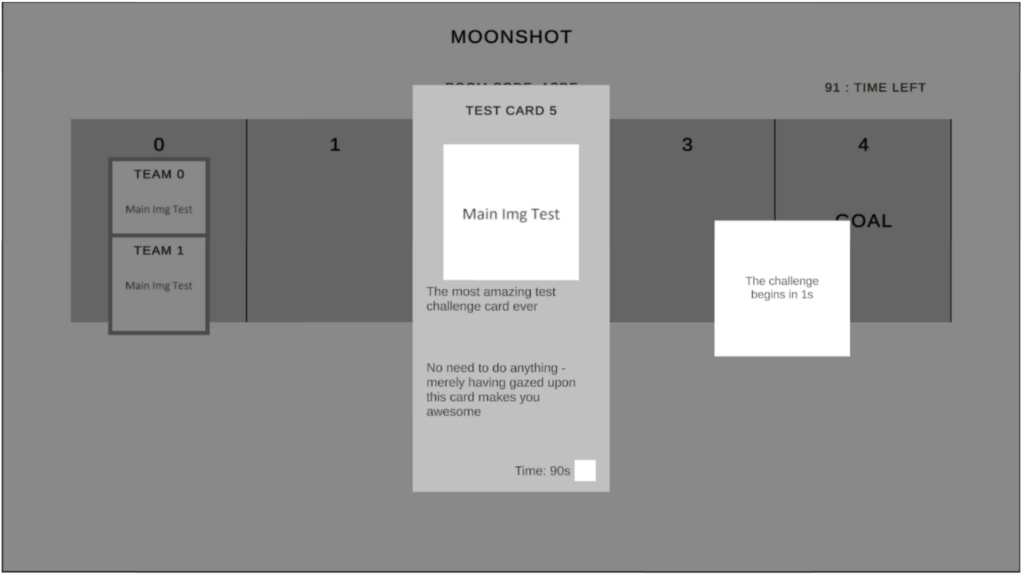
UI & UX Design
🎡 Digital Workshop: Replaced plasteline figures with an online ideation space: wheel spin, pinned words, business name field, and drawing board for tokens.
🎨 Token Creation Tool: Kept creativity intact, gave teams ownership of identity.
📹 Zoom-Optimized Interface: Screen-sharing layouts, readability across devices.
🤖 Automated Facilitation: Managed flow, prompts, turn-taking, voting.
🚀 Rocket Progression: Visual metaphor carried from board game — moving closer to the Moon with each successful challenge.
↓Welcome screen + Loading screen
The digital journey began with a workshop designed to capture the playful spirit of the physical game. Instead of molding plasteline figures, teams spun a digital wheel to receive two random words. On the ideation board, they could pin these words, invent a business name, and sketch a token using a digital drawing canvas.
Once finished, the tokens were generated and presented in a presentation room, preserving the excitement of showcasing ideas to other teams before play began. This phase was all about ensuring the process felt creative and hands-on, even in a digital format.
↓Hand shaping a figure and naming it has been replaced with a workshop crafting board, where each team can draw and name their token.
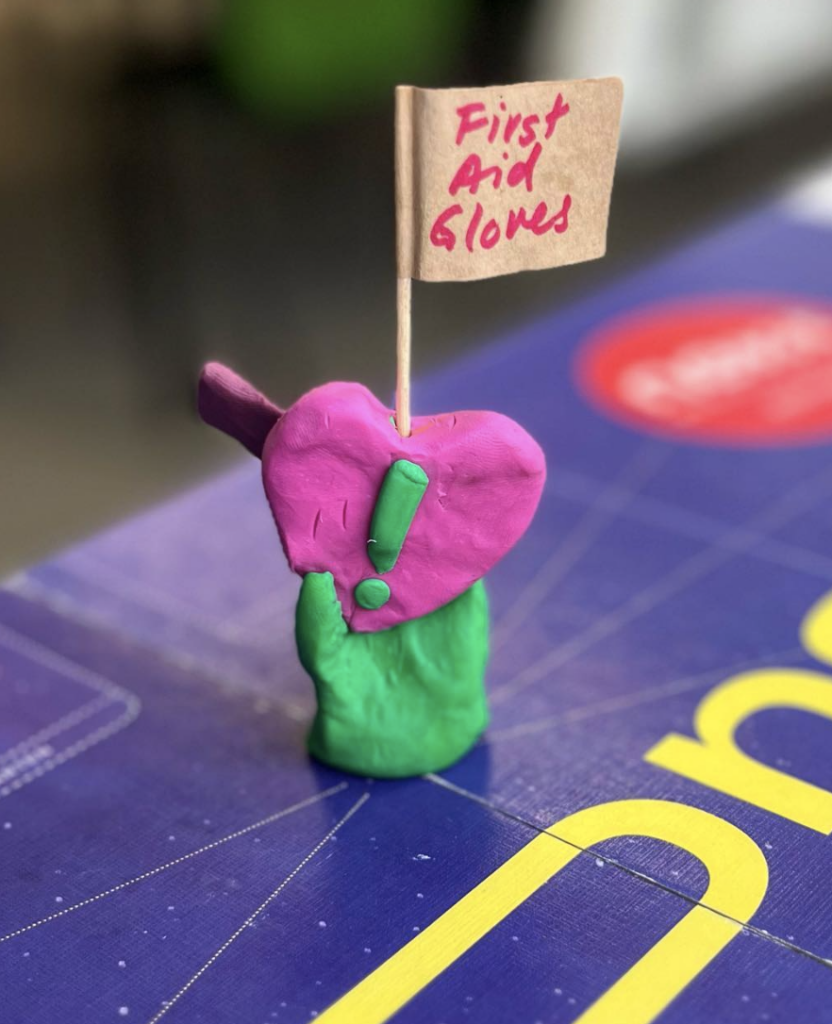
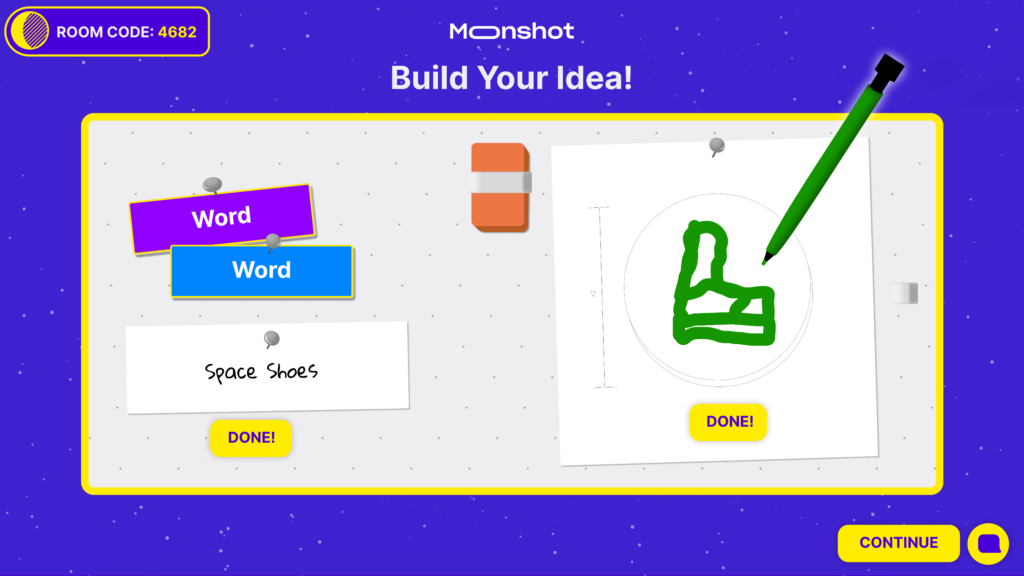
After the workshop, teams entered the digital board game. The interface guided players through a repeating loop:
- Draw a Task Card – the system revealed a creative challenge.
- Team Collaboration – members brainstormed and submitted their response.
- Peer Voting – other teams decided if the task was completed successfully.
- Rocket Movement – approved teams advanced their token closer to the moon.
This loop continued until one team’s rocket reached the final goal. The interface was carefully optimized for Zoom screen-sharing, with a 16:9 layout, clear hierarchy, and scalable UI elements to keep the game readable on shared screens.
↓Main Screen: Board game
To unify the experience across both phases, I developed a comprehensive design system that balanced digital usability with the identity of the original board game.
- Colors & Logo: Core palette and logo were adapted directly from the physical game, ensuring brand recognition and continuity. The deep purples and vibrant accent tones carried over seamlessly into the digital version.
- Typography: Moonshot original font for headings and simple sans font for body text, chosen for their clarity during screen sharing.
- Illustration Style: The playful, hand-drawn aesthetic from the physical cards was modernized for digital screens, keeping a link to the tactile origins.
- Components: A library of 25+ reusable UI elements provided structure and consistency across the workshop and board game phases.
Through iterative prototyping and testing, this hybrid system matured into an experience that felt both intuitive for remote corporate teams and playful enough to preserve the essence of the original game.
↓Main Screen: Challange Flow
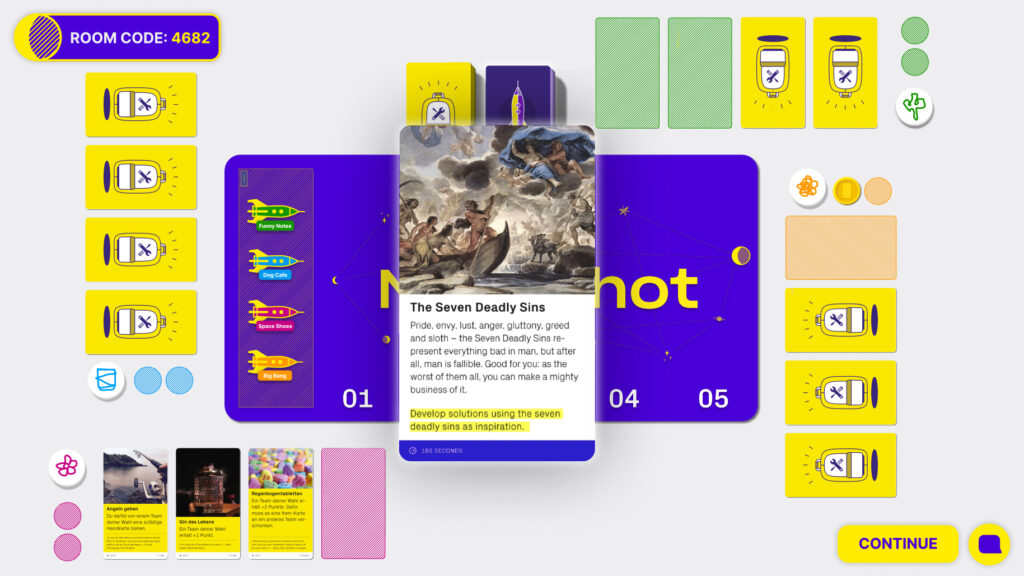
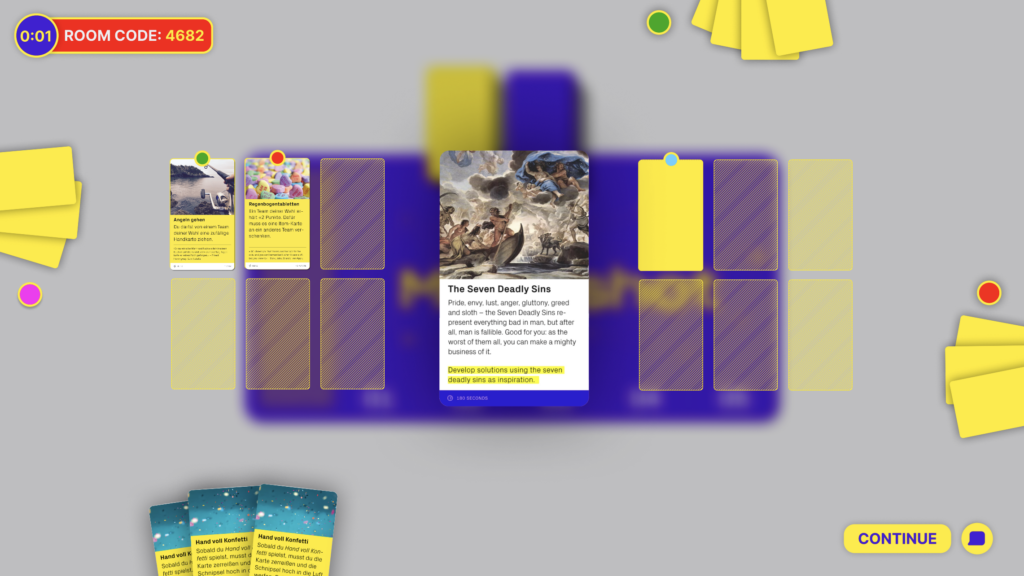
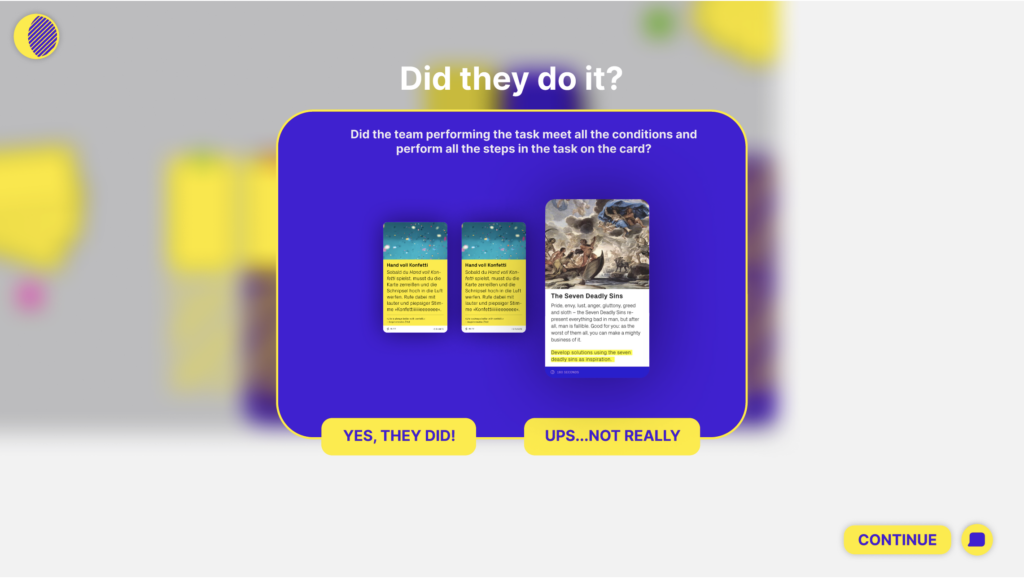
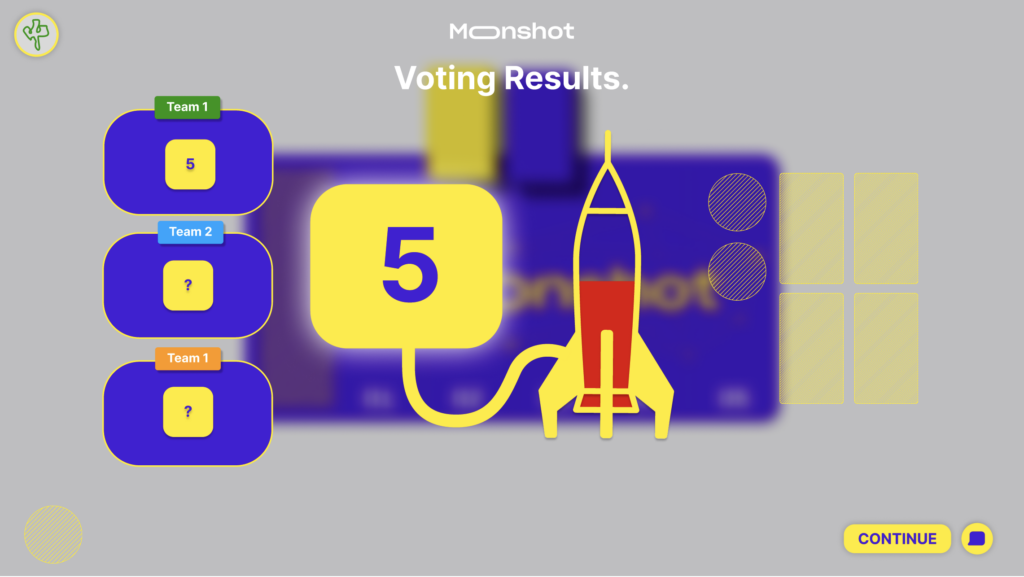
Reflection & Impact
Moonshot’s digital transformation was more than a UX/UI challenge: it reshaped how the workshop functions as a business. Instead of facilitating every session in person, Till can now sell access codes to companies, who log in remotely, join with a room code, and run workshops on their own. This shift created an entirely new scalable business model.
For participants, the experience preserved the essence of the original board game: inventing ideas, creating tokens, and collaborating playfully. The digital workshop phase (wheel spin, ideation board, drawing canvas, presentations) and the board game loop (task cards, team responses, voting, rocket progression) worked together to keep creativity at the center.
For the business, the impact was clear:
- New revenue model – workshops became productized, sold via codes.
- Global reach – remote teams worldwide can now take part.
- Operational freedom – no longer dependent on Till’s presence at each workshop.
New revenue model → Workshops became productized and sold via access codes.
Global reach → Remote teams worldwide can now participate.
Operational freedom → The founder no longer needed to facilitate each session.
↓All game screens and components handover in Figma

🧩 Digital Adaptation Strategy: Translating physical to digital requires focusing on core emotional drivers, not just replicating mechanics. Research in the original physical context was crucial for building the right digital experience. Maintaining creative elements (like token creation) mattered more than literal feature replication.
🌐 Remote Collaboration Design: Video conferencing integration requires specific UX considerations. Limited screen space demands a clear information hierarchy. Thoughtful design choices can preserve social presence even online.
🤝 Stakeholder Management: Balancing the founder’s creative vision with digital constraints required continuous negotiation. Iterative testing validated design decisions and kept the experience engaging. Close cross-functional collaboration with the developer, project manager, and founder was essential to success.
